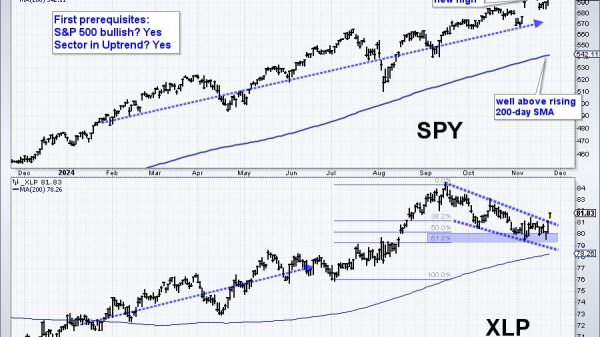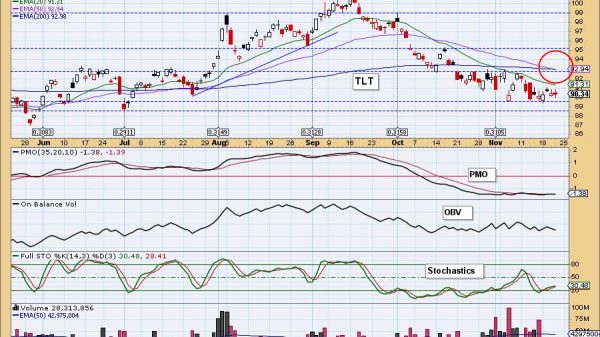As former Federal Trade Commission (FTC) chairman Timothy J. Muris has recently noted, “President Biden rejects the economics-driven antitrust policies of the past 40 years.” In contrast, President Joe Biden “promised to return to earlier antitrust traditions.” Unfortunately, “those traditions were abandoned for good reason: they harmed consumers.”
An important illustration Muris uses is the 1936 Robinson-Patman Act (RPA), which used to be a lynchpin of antitrust enforcement. After “withering” and “devastating” academic and legal criticisms that “excoriated” FTC enforcement, the agency began moving away from the act half a century ago. However, despite the fact that, in the words of Richard Posner, “The Robinson-Patman Act . . . is almost uniformly condemned by professional and academic opinion, legal and economic,” both the FTC chair, Lina Khan, and the FTC’s newest commissioner, Alvaro Bedoya, have endorsed it.
So what does the RPA prohibit? Among other restrictions limiting the means of creating economies of scale and extending such savings to consumers (i.e., to keep more efficient, larger producers and suppliers from outcompeting smaller ones to the detriment of buyers), it outlaws price discrimination between customers not based on provable cost differences, “where the effect of such discrimination may be substantially to lessen competition or tend to create a monopoly.” Its most important application was to large-volume discounts, particularly involving large chain stores that were revolutionizing product distribution—the RPA was commonly called the “anti-chain store act,” and A&P, the largest chain store when the RPA was adopted, was the main target.
While the words of the act read like a defense of competition, the effect of its restrictions was to reduce competition because the quantity discounts and other efficiency-enhancing mechanisms attacked in the act actually benefited consumers by leading to lower retail prices.
How do quantity discounts help consumers? To get these discounts, retailers such as chain stores must sell a huge volume of products. How do retailers do that? Through lower retail prices, a wider selection and larger inventory, more rapid responsiveness to changes in conditions and consumer tastes, more stores, etc. That these features benefit consumers compared to other vendors is shown by the increased patronage of stores that provide them. Threatening to take away the quantity discounts, which help enable the lower prices and better offerings that consumers prefer, would undermine such advantages.
That is the core of the earlier recognition that the RPA is a bad law. Former federal judge Robert Bork famously called it “the misshapen progeny of intolerable draftsmanship coupled to a wholly mistaken economic theory.”
Rulings under the act have often, without economic logic, held that quantity discounts somehow hurt competition. Those rulings confused harm to competitors who lose out to preferred suppliers with harm to the competitive process. But superior offerings from competitors—the essence of competition—necessarily “harm” less efficient rivals in the process of benefiting consumers. As a result, this semantic confusion has frequently undermined the competitive process and its consumer benefits by protecting inefficient rivals from competition—all the while claiming to be defending competition.
It must be noted that the RPA supposedly allows firms to defend their quantity discounts by showing that specific cost savings justify different prices. However, that defense is little more than an illusion. The courts virtually never find the cost data sufficient, because as Richard Posner put it, the “cost savings to the manufacturer could not be demonstrated with the precision required.”
Of course, given that costs (opportunities forgone) are subjective and given the limitations of historical accounting data for forward-looking decisions, especially for multiproduct firms with no clear “right” way to allocate overhead costs, advertising, storage costs, and so on, to particular products, unambiguous proof that costs justify price differences is impossible. Essentially, in Walton Hamilton’s analysis, “No accountant has been able to devise a method yielding . . . figures which does not embody a dominance of arbitrariness and guesswork.”
That, in turn, may explain a good part of the resurgence of the Biden administration’s interest in reviving the RPA. If the government can get the courts to again accept the false claim that large, successful competitors harm competition when they draw customers who benefit away from other competitors, then the large producers that the RPA always put in the crosshairs would be forced to turn to the cost defense.
And given the court’s historical refusal to accept cost defenses, not because of their logic but because accounting data is insufficient to “prove” exactly what cost savings there are, the targeted firms would not be able to “escape” efforts to punish them, even when they benefit consumers (successful RPA cases almost always resulted in higher consumer prices). That anti-consumer result, wrapped in pro-consumer language but actually about punishing superior competitors, is precisely what those who want to revive the RPA wish to return to.
History is no kinder to the RPA. It was introduced just fifteen days after the Supreme Court ruled that Franklin Delano Roosevelt’s National Industrial Recovery Administration (NIRA), which essentially cartelized much of American industry to every consumer’s detriment, was unconstitutional. That initial version of the RPA, which was essentially an effort to resurrect the restrictions of the codes written under NIRA, did not attract sufficient support to pass. Only then did supporters turn to the RPA’s language, which Muris summarizes as “to say the least, vague, frequently self-contradictory, and subject to varying interpretations.” No one would be able to defend resurrecting such a law on a rational basis.
In fact, the RPA was, and efforts to resurrect its use now are, nothing less than attempted violations of what a law should be. It is, as Frédéric Bastiat wrote in The Law, “the conversion of the law into an instrument of plunder . . . under the pretense of organization, regulation, protection, or encouragement.” However, “this act is exactly what the law is supposed to suppress, always and everywhere.” There is no way such a law that violates The Law can advance American’s well-being. It is more of a special interest illustration of what Ronald Reagan called the nine most terrifying words in the English language—“I’m from the government, and I’m here to help.”
























